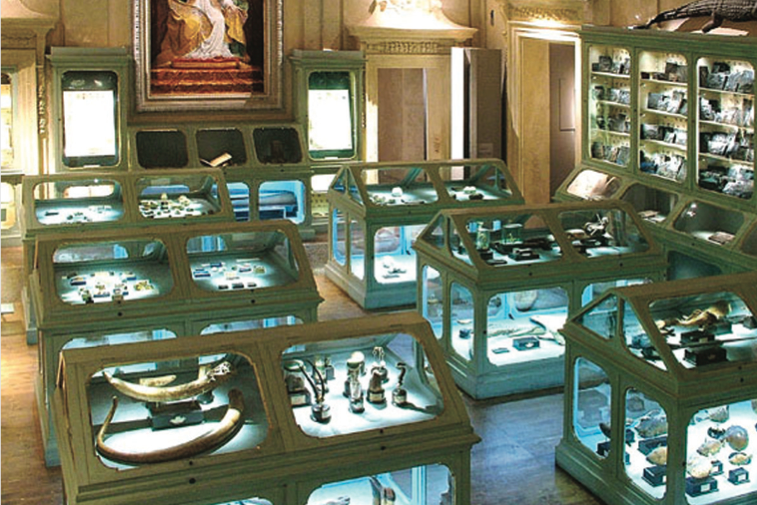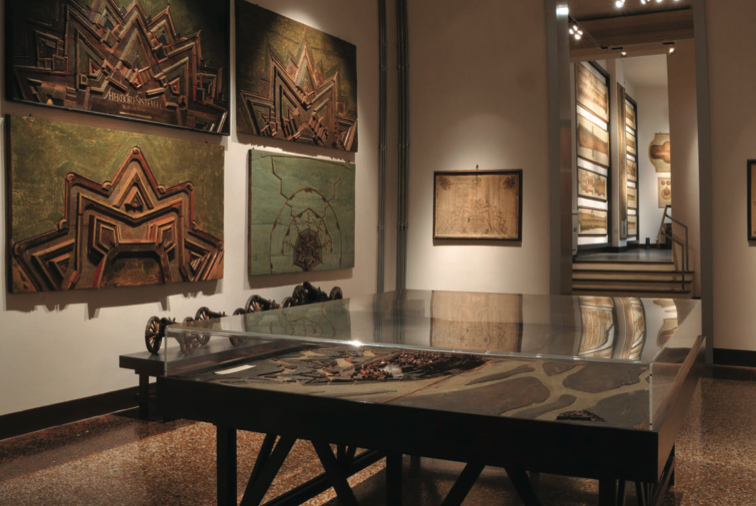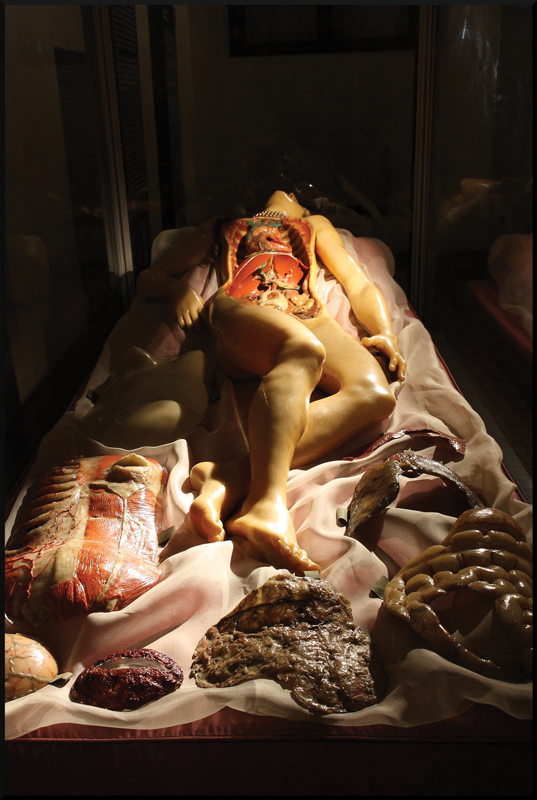The Diplodocus lives here. But with the passage of centuries and millennia, it must have lost its appeal, as it seems there are too few people visiting the Diplodocus Carnegiei model, a typical herbivorous dinosaur, one of the largest reptiles of the late Jurassic period. He lives in a hall of the University of Bologna’s Geology and Paleontological Museum, named after Giovanni Capellini. The entire complex of Alma Matter’s museums is a wealth of treasures and wonders little known by Bologna’s citizens themselves. In fact, the university - the oldest in the world - is home of museums of zoology, astronomy, human anatomy and anthropology. The University of Bologna preserves in the Historical Museum and the Picture Gallery elements from the protagonists and events that contributed to their creation over the centuries. Also, the Naval Museum and the collection of ancient geographical maps propose an itinerary of great beauty. While the Museum of Indian and East Asian Ethnography makes us discover far-away civilizations, the oldest Museum of Anatomy in the world preserves anatomical specimens in wax from the 700’s which, in their highest scientific value, have nothing macabre about them. Models in wax were made by Ercole Lelli and the replicas of organs and body parts were also made of wax - in the 700’s - by Anna Morandi (to whom was also entrusted the chair of anatomy) and her spouse Giovanni Manzolini.
Exceptional and amazing is the very modern Obstetric Museum which exhibits didactic material that Bolognese Doctor Giovanni Galli had had modelled at his own expense in wax and clay,  and that Pope Lambertini bought (November 14th, 1757) for the University’s Science Institute.
and that Pope Lambertini bought (November 14th, 1757) for the University’s Science Institute.
It is also possible to see: the "portraits of the progenitors" in the Museum of Anthropology; the plant specimens of the "Garden dei Semplici" in the botanical garden; the dawn of life in the Geology and Paleontology Museum "Capellini"; the marvels hidden in the heart of the land in the Museum of Mineralogy; the Museum of Comparative Anatomy and the Museum of Domestic Animal Anatomy; the astronomical tools of the observatory from the seventeenth and the eighteenth centuries in the Museum of Astronomy, where one can travel through the mysteries of the firmament; and selections of materials in the collections of two great naturalists: Ulisse Aldrovandi (1522-1605) and Luigi Ferdinando Marsili (1658-1730) in the museums bearing their names.
All this is a universe of testimonies and knowledge whose epicentre is the Palazzo Poggi, which became the main venue of the Alma Mater with the reform of public education in 1803. This heritage, pride and wealth of the University of Bologna, finds its origin in 1711 when the Bolognese Senate bought the Palazzo Poggi on Via Zamboni to accommodate the Institute of Sciences and Arts, newly created, which represented throughout the eighteenth century a cultural model for all of Europe. From an albeit brief presentation of the museums of the University of Bologna emerge essentially two aspects: the unsuspected richness of an artistic, cultural and scientific heritage which aims to be a mirror of civilization, and the knowledge and science we are rediscovering in the dynamic elements of the integral development process of the individual and the community and as a test for the interpretation of the citizen himself and his environment. Secondly, the highest Bolognese tradition of humanities and sciences studies is emerging, expressing itself through brilliant insights of protagonists, true precursors of modern museology - such as Aldrovandi, Marsili, the Cospi, Benedict XIV. Through almost five centuries, this tradition has taken the form of a contemporary discourse on the conservation and utilization of exceptional didactic material.
This heritage, pride and wealth of the University of Bologna, finds its origin in 1711 when the Bolognese Senate bought the Palazzo Poggi on Via Zamboni to accommodate the Institute of Sciences and Arts, newly created, which represented throughout the eighteenth century a cultural model for all of Europe. From an albeit brief presentation of the museums of the University of Bologna emerge essentially two aspects: the unsuspected richness of an artistic, cultural and scientific heritage which aims to be a mirror of civilization, and the knowledge and science we are rediscovering in the dynamic elements of the integral development process of the individual and the community and as a test for the interpretation of the citizen himself and his environment. Secondly, the highest Bolognese tradition of humanities and sciences studies is emerging, expressing itself through brilliant insights of protagonists, true precursors of modern museology - such as Aldrovandi, Marsili, the Cospi, Benedict XIV. Through almost five centuries, this tradition has taken the form of a contemporary discourse on the conservation and utilization of exceptional didactic material. This is a reality that requires a constant and inexhaustible renewal effort of museographic structures and the related didactic instruments.
This is a reality that requires a constant and inexhaustible renewal effort of museographic structures and the related didactic instruments.





.png)